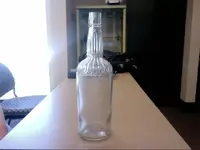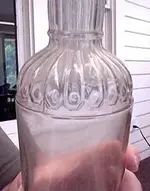skite
Tenderfoot
- Joined
- Apr 17, 2012
- Messages
- 7
- Reaction score
- 0
- Golden Thread
- 0
- Primary Interest:
- All Treasure Hunting
Hello All -
I'm looking for any information at all on this bottle. It's part of a large collection of bottles and assorted glass ware that spans from the 1830's to the 1970's. It's a bit generic looking but maybe someone can help me narrow things down a bit. There are no identifying letters, numbers, or marks on this bottle at all. Thanks!
skite
I'm looking for any information at all on this bottle. It's part of a large collection of bottles and assorted glass ware that spans from the 1830's to the 1970's. It's a bit generic looking but maybe someone can help me narrow things down a bit. There are no identifying letters, numbers, or marks on this bottle at all. Thanks!
skite






